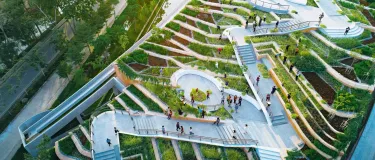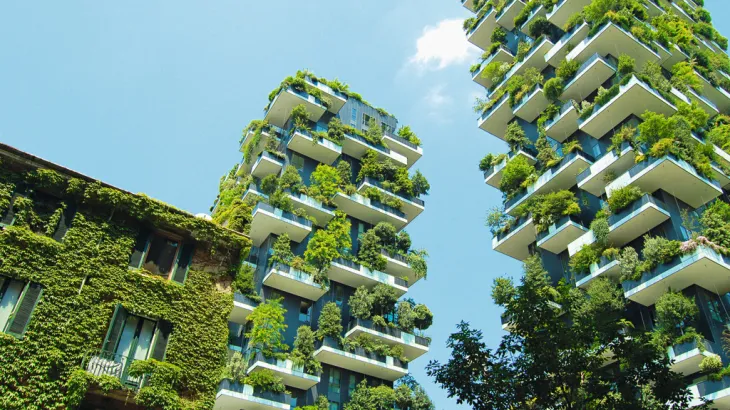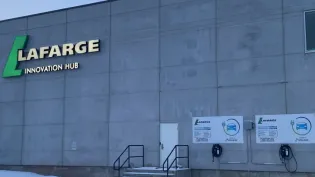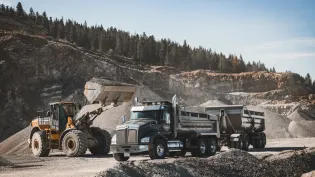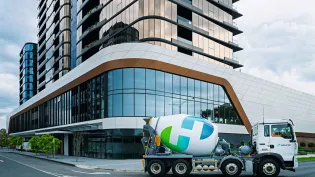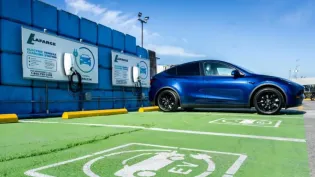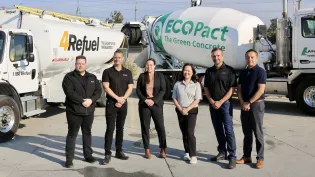CLIMATE ACTION
Decarbonizing Lafarge to Become Net-Zero
Lafarge Canada, a member of the Holcim Group, is committed to a science-driven approach on our path to becoming a net-zero company.
As a leader in innovation and sustainability, Holcim's 2030 and 2050 CO2 reduction targets have been validated by the Science Based Targets initiative (SBTi), making us one of the first companies globally to achieve this. Furthermore, we are proud to lead the industry with our innovative 1.5°C science-based framework, developed in collaboration with the SBTi
The majority of our Scope 1 emissions are related to the production of cement. Overall, Scope 1 accounts for approximately two-thirds of our total GHG emissions in Canada, and most of that is the result of cement production.
Scope 1 Reduction Actions
- Transitioning to Portland limestone cement (PLC) achieves a 10% CO2 reduction, with ongoing efforts to produce ECOPlanet cements
- Use of alternative fuels reduces the extraction of virgin fossil fuels for use as energy and diverts materials from landfills. All Canadian plants will utilize alternative fuels by the end of 2023
- Investments aimed at increasing energy efficiency in the cement production process
- A Svante carbon capture system, operational since 2019, captures 1 tonne of CO2 daily. In addition, front-end engineering and design studies are underway to develop large-scale carbon capture at the Exshaw facility with sequestration within the Bow Valley Corridor
- Supplementary Cementitious Materials (SCMs) produce low carbon-ready mix concrete and concrete products to reduce the environmental impact
- To counter fly ash scarcity, we're recovering and producing suitable SCMs
- Where possible, asphalt production has transitioned to warm mix, reducing CO2 by approximately 10%
Scope 2 emissions result from the production of energy that Lafarge consumes, i.e. electricity. Scope 2 emissions account for a small portion of our total GHG emissions in Canada.
Scope 2 Reduction Actions
- Lafarge continuously explores and completes projects across all product lines, specifically targeting Scope 2 emission reductions.
- In Alberta, the Exshaw facility has entered into a Power Purchasing Agreement (PPA) with TransAlta for the supply of wind-generated electricity. This supply agreement accounts for approximately 40% of the power consumed at Exshaw. Additional PPAs for Exshaw are planned, as well as PPAs for other locations.
These are all other emissions resulting from our activities, including 3rd party material transport. Due to the geography of Canada, these are a little higher than typically expected.
Scope 3 Reduction Actions
- Lafarge implemented an anti-idling policy for all fueled vehicles in 2021.
- Readymix concrete and Aggregate operations within the Greater Vancouver Area Market areas switched to using R50 Diesel in Q4 2022, a 50% renewable diesel! The fuel has a 36% reduction in carbon emissions based on a life cycle basis.
- 100 Electric vehicle charging stations are being installed in Western Canada and 40 in Eastern Canada, for employees and customers.
- Where possible, marine transportation is used for aggregates and cementitious products and rail transportation is used to distribute cementitious products to various terminals around the country.





